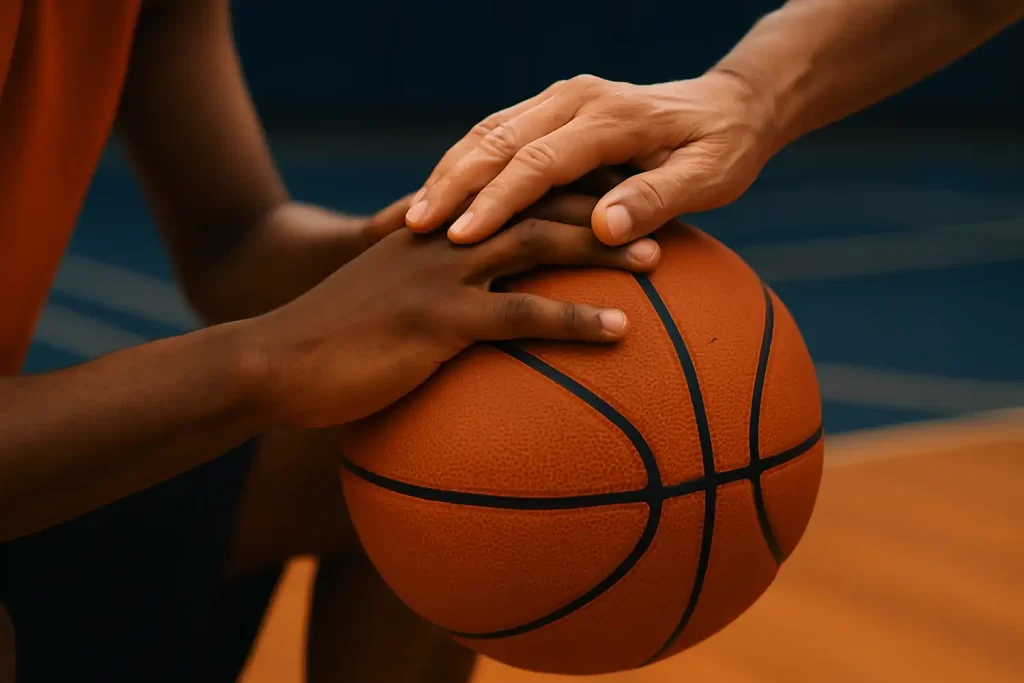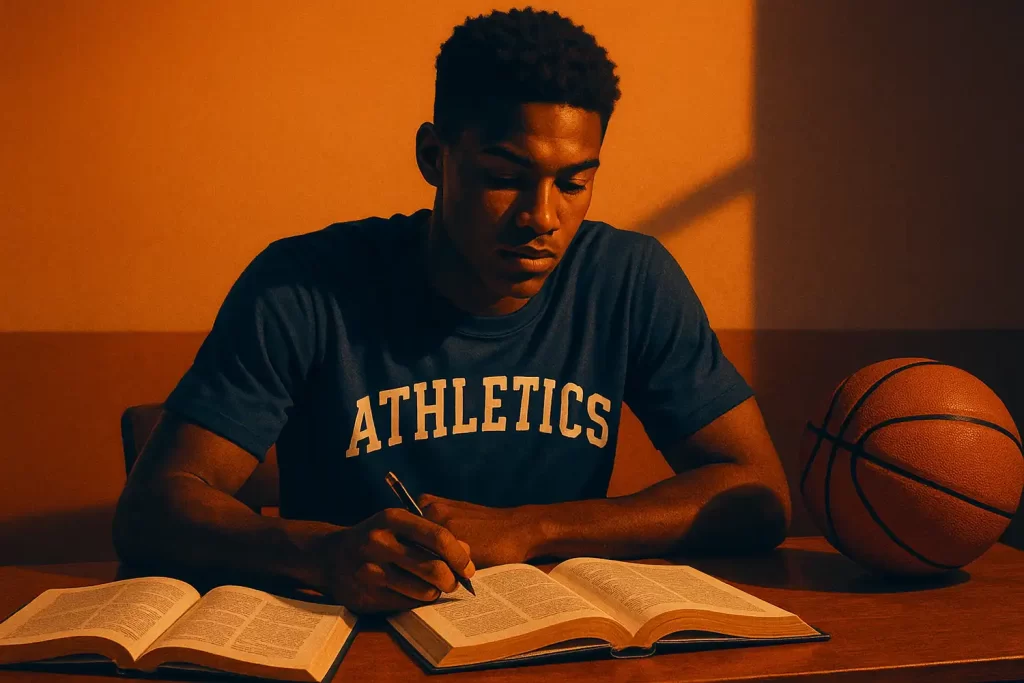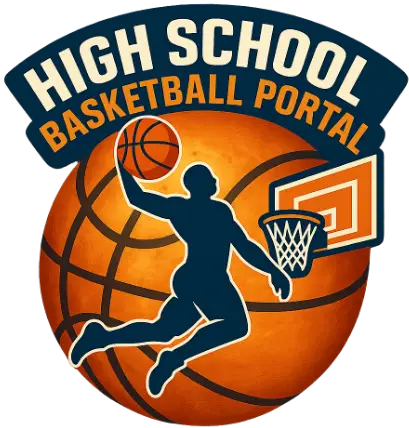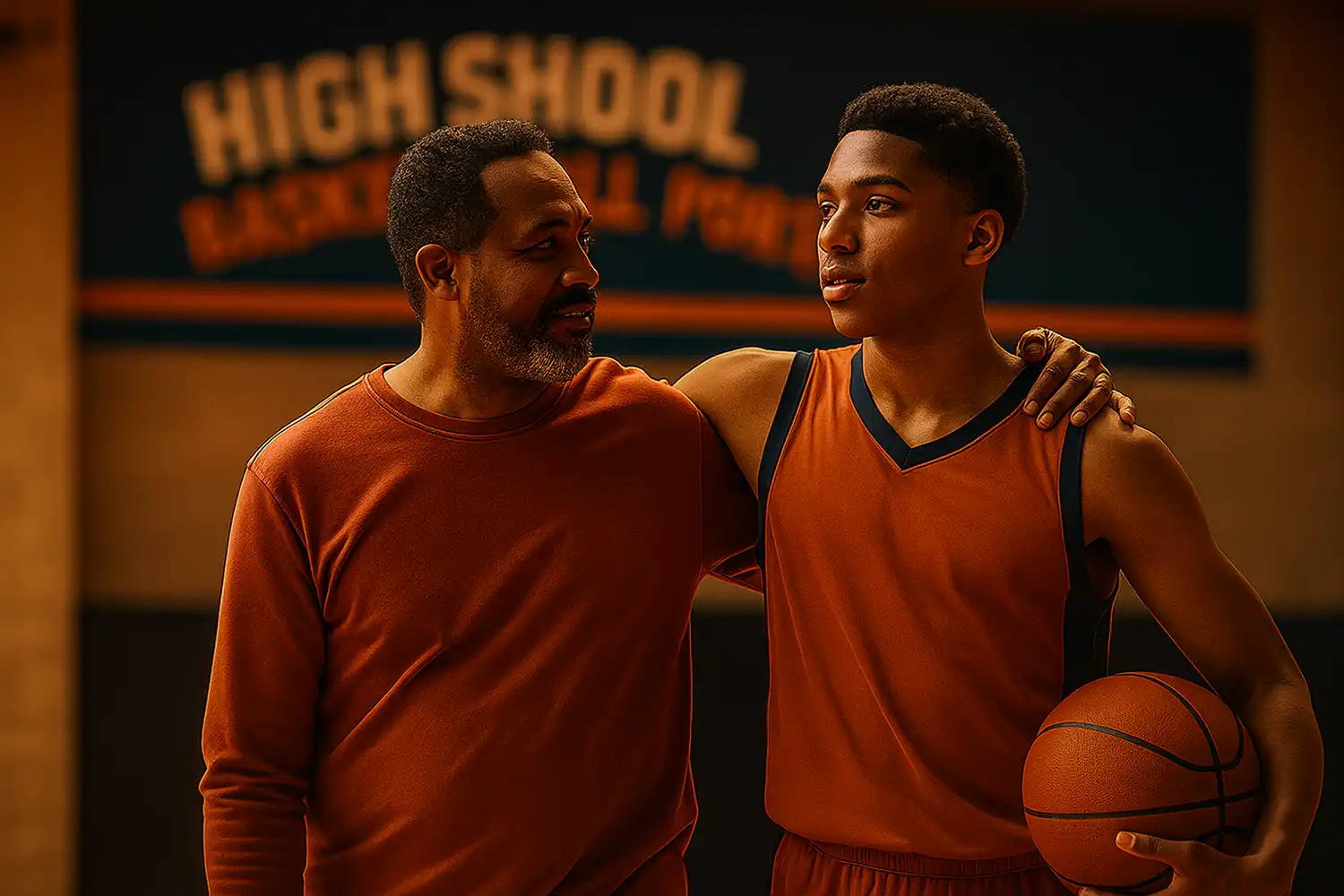The Parent’s Playbook: How to Support Your Athlete Without Adding Pressure
Every parent wants to see their child succeed — the proud moment of stepping onto a college court, the scholarship offer, the dream fulfilled. You’ve invested years driving to practices, sitting through tournaments, and cheering from the stands. Now the recruiting process begins, and the stakes feel higher than ever.
Here’s the truth: parents are one of the most powerful influences in an athlete’s journey. The right support can give your child confidence, organization, and opportunity. But too much involvement — or the wrong kind — can create stress, strain relationships, and even push coaches away.
This guide is your playbook. You’ll learn how to encourage without overwhelming, how to help with academics and highlight videos, and how to be the calm voice your athlete needs when recruiting pressure builds. Whether your child dreams of Division I, Division II, Division III, or NAIA, your role is the same: support, guide, and let them lead.
Understanding Your Role in the Recruiting Process
College recruiting is about finding the right fit — athletically, academically, and personally. That means your athlete must take the lead. College coaches don’t want to recruit parents; they want to recruit independent, responsible student-athletes.
Your role? Think of yourself as the foundation, not the driver. You provide stability, encouragement, and structure while allowing your child to steer their own path.
Common mistakes parents make:
- Chasing only the “big name” schools. Many parents push Division I at all costs. In reality, a strong Division II or III program might be the better fit for playing time, academics, and long-term happiness.
- Over-communicating with coaches. It’s natural to want to advocate for your child, but when parents dominate communication, coaches question if the athlete can handle responsibility on their own.
- Micromanaging the process. Parents who control every email, phone call, and workout plan risk sending the message that their athlete isn’t mature enough to manage college life.
How to do it right:
- Provide guidance, but encourage your athlete to write their own emails and texts to coaches. Offer to proofread, not to speak for them.
- Keep them organized with calendars and deadlines, but let them press send, make calls, and own the communication.
- Remind them that fit matters more than prestige. A program that develops their game and supports their academics is far more valuable than chasing a big logo.
When you embrace this role, you show coaches your child is ready for the next step — and you give your athlete confidence that they’re capable of leading their own journey.
Encouragement vs. Pressure — Striking the Balance
Every parent wants the best for their child. But there’s a fine line between encouragement and pressure — and crossing it can unintentionally damage your athlete’s confidence and enjoyment of the game.
The Fine Line Between Motivating and Micromanaging
Encouragement means creating an environment where your child feels supported and free to grow. Pressure feels like constant expectations, judgment, or disappointment when things don’t go perfectly.
Encouragement sounds like:
- “I love watching you play.”
- “What did you enjoy most about today’s game?”
- “I’m proud of your effort.”
Pressure sounds like:
- “You need more points if you want a scholarship.”
- “Why didn’t you shoot more?”
- “If you don’t play well, you’ll never get recruited.”
The difference? Encouragement builds trust and motivation. Pressure builds fear and anxiety.

Common Pressure Traps Parents Fall Into
Even with the best intentions, parents can fall into habits that add stress to their child’s recruiting journey:
- Living through your athlete. Your child’s success is not your second chance at a dream. Coaches notice when parents are more invested than players.
- Over-scheduling camps and showcases. Too many events burn athletes out physically and mentally. Choose wisely instead of chasing every opportunity.
- Talking scholarships 24/7. If every conversation revolves around offers and exposure, the game stops being fun.
Practical Communication Scripts for Parents
Sometimes, it’s not what you say but how you say it. Here are easy swaps to shift from pressure to encouragement:
- Instead of: “You need to work harder if you want to get noticed.”
Say: “Your effort is paying off — keep building those habits and opportunities will come.” - Instead of: “That turnover cost you the game.”
Say: “Mistakes happen — what did you learn from that play?” - Instead of: “You have to play better if you want a scholarship.”
Say: “I’m proud of how you’re growing as a player and as a student.”
These small changes keep conversations positive, reduce stress, and remind your athlete that your love isn’t tied to performance.

Academics First — Why Grades Open Doors
Every parent knows school comes first, but in recruiting, academics aren’t just a box to check — they’re a gateway. Coaches can’t recruit athletes who don’t meet NCAA or NAIA eligibility requirements, no matter how talented they are on the court.
The Recruiting Reality
- A 6’4” guard who can’t stay eligible is a wasted scholarship.
- A 3.5 GPA student with solid skills is a coach’s dream — they’re reliable, disciplined, and low risk.
- Academic strength often unlocks more financial aid, not just athletic scholarships.
This is where parents play a crucial role: making sure the foundation is solid so opportunity isn’t lost before the first highlight video even gets watched.
What Parents Can Do
Track the NCAA Core Requirements
- 16 core classes (English, math, science, social studies, foreign language).
- Minimum GPA depends on test scores, but the higher the grades, the more doors open.
Stay On Top of Testing & Deadlines
- SAT/ACT may still be required by some schools.
- Transcripts and NCAA Eligibility Center registration must be handled early.
Build Academic Habits at Home
- Encourage study routines.
- Help your athlete manage time during season (when late practices or travel can cut into homework).
- If needed, hire a tutor before grades slip too far.
The GPA Game Plan
Parents should know their athlete’s GPA at all times, just like they know their points per game. A quick system to keep it simple:
- Freshman Year: Establish habits — every grade counts from day one.
- Sophomore Year: Target a 3.0+ GPA minimum, aim higher if possible.
- Junior Year: Use test scores to balance GPA; lock in NCAA eligibility.
- Senior Year: Maintain eligibility — no last-minute academic surprises.
Helping With Highlight Videos & Recruiting Profiles
For today’s athletes, highlight reels and online profiles are the new first impression. Before a coach ever calls your child, they’ll watch film and scan a profile. If those aren’t strong, opportunities can disappear before they even begin.
What Coaches Really Want to See in Film
Parents often believe highlight reels should be flashy, like a mixtape. In reality, college coaches look for:
- Consistency, not hype. Good decision-making, defensive effort, and hustle plays.
- Fundamentals. Shooting mechanics, ball-handling under pressure, passing vision.
- Game context. A highlight reel shows flashes, but coaches want film that proves your child’s impact beyond scoring.
Simple Tools Parents Can Use
You don’t need Hollywood equipment to help your child. A smartphone tripod, basic editing software (iMovie, Adobe Premiere Rush, or even Hudl’s built-in editor), and consistent filming is enough.
- Film from a steady midcourt angle.
- Capture both offense and defense.
- Keep edits clean — no loud music or fancy graphics distracting from play.
Your role: Be reliable with filming and organizing clips, but let your athlete choose which plays best represent them.
Building an Online Recruiting Profile
After the highlight reel, coaches want easy access to details:
- Height, weight, position, class year.
- Key stats (points, assists, rebounds, shooting %).
- Academic info (GPA, test scores, core classes).
- Contact info for both athlete and high school/AAU coach.
Profiles can live on:
- NCSA, Hudl, or CaptainU (major recruiting platforms).
- HSBP Portal profiles (custom recruiting space built for visibility).
- Personal YouTube channel (to host highlight reels).
Parents can help by proofreading profiles, uploading film on schedule, and ensuring everything is polished and professional. Coaches don’t want broken links or incomplete info.
Choosing Camps, Showcases & Exposure Wisely
For many families, the recruiting journey gets expensive fast. Camps, showcases, and travel ball fees can add up — and not every event delivers a return. Parents play a key role in choosing the right opportunities instead of chasing every flyer that hits their inbox.
How to Choose the Right Camp
- Focus on fit, not hype. A big-name camp doesn’t guarantee exposure. Regional camps or college-hosted events often give more direct contact with coaches.
- Check the coach list. Look for confirmed colleges attending, not just “invited.”
- Quality over quantity. One well-chosen camp is worth more than five generic ones.
Travel and AAU Teams vs. Local Exposure
- AAU/Travel Teams: Provide higher-level competition and broader exposure. But the cost and time commitment can be heavy.
- Local Programs: May not have the same prestige, but can still produce great film and meaningful development.
- Parent’s role: Balance your athlete’s goals with your family’s resources. Don’t assume bigger always means better — a coach wants a player who can compete and fit, not just one who traveled the most.
Using Social Media for Recruiting
Today’s coaches don’t just check email — they check Twitter, Instagram, and YouTube.
- YouTube: Best for highlight reels and full-game uploads.
- Instagram/TikTok: Quick clips, training videos, and personality posts show character and consistency.
- Twitter/X: Direct tool for athletes to share updates, schedules, and film with coaches.
Parents can help by monitoring content, ensuring posts are positive and professional, and reminding athletes that every post is part of their recruiting résumé.
Mental Health & Emotional Support for Athletes
The recruiting process can be exciting, but it’s also one of the most stressful times in a young athlete’s life. Balancing school, practice, games, and the constant pressure to “get noticed” can leave even the most talented players feeling drained. Parents often underestimate how much their calm presence matters.
Recognizing Stress and Burnout
Athletes may not always admit when they’re overwhelmed. Look for signs:
- Constant fatigue or irritability.
- Grades slipping despite effort.
- Loss of enjoyment in the game.
- Withdrawal from friends or family.
When you notice these signals, step in with support — not criticism.
How Parents Can Provide Stability
- Normalize rest. Days off don’t mean falling behind; they prevent injuries and extend careers.
- Keep perspective. Remind your child they’re valued for who they are, not just their stats.
- Be available. Sometimes the best support is simply listening without offering solutions.
Encouraging Healthy Habits
- Sleep: Teen athletes need 8–10 hours a night. Protect their rest by setting boundaries around late-night screens.
- Nutrition: Simple home-cooked meals, hydration, and snacks can fuel both mind and body.
- Balance: Encourage interests outside basketball — hobbies, friendships, and downtime strengthen resilience.
Parent Pitfalls to Avoid
Even the most well-meaning parents can unintentionally hurt their child’s recruiting chances. Coaches see these red flags quickly — and they can make the difference between an athlete standing out or being overlooked.
Over-Contacting Coaches
It’s natural to want to advocate for your child, but when parents dominate communication, coaches worry the athlete won’t be independent in college. Let your child send emails, make calls, and handle conversations. Your job is to guide in the background, not take center stage.
Focusing Only on Division I
Every parent dreams of seeing their athlete at a top program. But the reality? Less than 2% of high school athletes play Division I. Division II, Division III, NAIA, and JUCO all provide excellent opportunities for scholarships, playing time, and development. Don’t let tunnel vision limit your child’s options.
Neglecting Academics
Grades open doors — or close them. Athletes with shaky transcripts often get skipped over, no matter their athletic talent. Parents who ignore academics risk costing their child opportunities before the first game film is even watched.
Over-Scheduling and Burnout
Loading every weekend with tournaments and showcases doesn’t guarantee offers. In fact, it can leave athletes exhausted and uninspired. Coaches would rather see steady growth and consistent performance than a tired, injured recruit.
Applying Pressure at the Wrong Time
Reminding your child of stakes right before a game, criticizing stats on the ride home, or making every family dinner about recruiting can turn basketball into a source of stress instead of joy. Keep the big picture in mind: your child’s love for the game fuels their future, not constant pressure.
Year-by-Year Parent Checklist (Freshman–Senior)
The recruiting process doesn’t happen overnight. Parents who stay organized and proactive give their athletes a huge advantage. Here’s a roadmap to guide your role through each stage of high school.
Freshman & Sophomore Years — Build the Foundation
- Prioritize academics: every grade counts toward NCAA eligibility.
- Encourage skill development over hype; focus on fundamentals.
- Help set up a simple highlight reel — short clips to show progress.
- Introduce your athlete to the idea of owning communication (practice writing short emails, thank-you notes).
- Keep balance: ensure basketball doesn’t push aside friendships, rest, or fun.
Junior Year — Exposure and Organization
- Update highlight reel with varsity film; keep it 3–5 minutes long.
- Create or refine the online recruiting profile (HSBP Portal, Hudl, NCSA, or YouTube).
- Track NCAA requirements: GPA, test scores, Eligibility Center registration.
- Research camps, showcases, and schools that fit academically and athletically.
- Encourage your child to begin reaching out to coaches directly.
Senior Year — Narrowing Choices and Making Decisions
- Finalize highlight reel and share with target schools.
- Support your athlete in consistent communication with coaches — encourage persistence but respect.
- Visit schools together and help weigh academic fit, financial aid, and culture.
- Manage logistics: transcripts, FAFSA, application deadlines.
- Be a sounding board — let your athlete make the choice, but help them think it through.
Final Word — Be Their Ally, Not Their Coach
At the end of the day, recruiting isn’t about perfect highlight reels, constant travel, or chasing the biggest name school. It’s about helping your child grow into a confident, disciplined, and balanced student-athlete who can thrive on and off the court.
Your role as a parent isn’t to run the process — it’s to be the steady anchor behind it. Encourage instead of pressure. Guide instead of control. Support instead of overshadow.
When you let your child lead while standing firmly in their corner, you give them the confidence to show coaches what really matters: talent, character, and resilience.
FAQ: Parent Recruiting Questions Answered
Should parents contact college coaches directly?
Parents can communicate with college coaches, but athletes should take the lead. Coaches want to hear directly from the player. Parents are best positioned to support behind the scenes — proofreading emails, helping with logistics, and providing encouragement.
How can parents help with highlight videos?
Parents can film games, organize footage, and assist with simple edits. Keep highlight reels concise (3–5 minutes), focused on fundamentals, and paired with full-game film for credibility.
When should parents start helping with recruiting?
Start freshman year by monitoring academics and building good habits. Recruiting activity often ramps up sophomore and junior years with highlight reels, profiles, and communication with coaches.
What mistakes should parents avoid in recruiting?
Avoid over-pressuring your athlete, focusing only on Division I schools, or contacting coaches too much. Don’t neglect academics. Support the process but allow your athlete to lead.
How can parents support their athlete’s mental health?
Be the calming presence. Normalize rest, encourage balance, and remind your child they’re valued beyond basketball. Look for signs of stress or burnout, and create space for open conversations.


